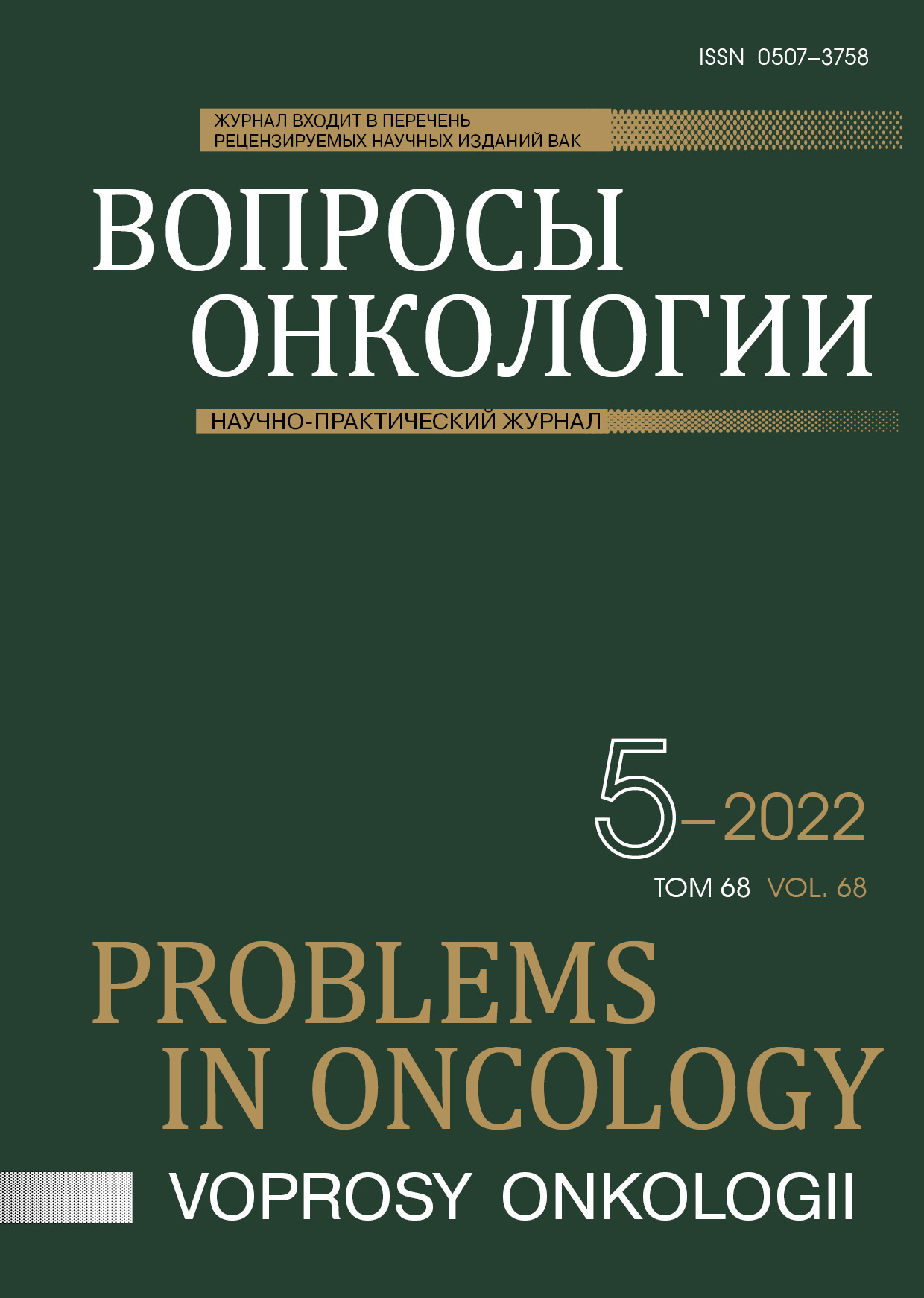Abstract
Aim. We aim aim to compare immunophenotypic characteritics of atypical epithelium (AE) with COVID-19-induced diffuse alveolar damage (DAD) and pulmonary lepidic-growth adenocarcinoma, accounting for cell cycle control, proliferation and differentiation].
Methods. We examined pulmonary tissue specimens from twenty-four fatal cases of COVID-19-induced acute respiratory damage syndrome confirmed by autopsy (Group 1) and four cases of pulmonary lepidic-growth adenocarcinoma (Group 2). Perpendicular dimensions of 10 nuclei were measured on the H&E slides, means of their sums of products (SPNM) were calculated. We have used p53, Ki67, p16, p63 antibodies for immunohistochemical staining in each case. We evaluate colour intensity, rate of stained cells of AE and the product of these parameters. We evaluated separately Nuclear and cytoplasmic staining (couple) and only cytoplasmic staining (cyt) for p16 expression. We measured proliferative index only at KI-67 stained slides. U-test and Spearman rank correlation test were used for statistical analysis.
Results. Expression of p63 was higher in group 1 (p=0.001), while p16 was more frequently expressed in group 2 (p=0.002). We have found no statistically significant differences (p>0.1) in the p53 and Ki67 expression. Group 1 showed There was negative correlation between the number of days from onset of symptoms and the following variables: Ki67 (r=–0.587, p=0.003); SPNM (r=–0.406, p=0.049).
Conclusion. The present study has shown heterogeneity in levels of cell cycle control expression, proliferation and differentiation of atypical epithelium in the pulmonary lepidic-growth adenocarcinoma and COVID-19-induced diffuse alveolar damage.
References
Tzotzos SJ, Fischer B, Fischer H et al. Incidence of ARDS and outcomes in hospitalized patients with COVID-19: a global literature survey // Crit Care. 2020;24(516). doi:10.1186/s13054-020-03240-7
Maria Fernanda de Mello Costa, Aaron I. Weiner, Andrew E. Vaughan. Basal-like Progenitor Cells: A Review of Dysplastic Alveolar Regeneration and Remodeling in Lung Repair // Stem Cell Reports. 2020;15, Is. 5:1015–1025. doi:10.1016/j.stemcr.2020.09.006
Kathiriya, Jaymin & Brumwell, Alexis & Jackson, Julia & Tang, Xiaodan & Chapman, Harold. Distinct Airway Epithelial Stem Cells Hide among Club Cells but Mobilize to Promote Alveolar Regeneration // Cell Stem Cell. 2020;26. doi:10.1016/j.stem.2019.12.014
Самсонова М.В., Михалева Л.М., Зайратьянц О.В. и др. Патология легких при COVID-19 в Москве // Архив патологии. 2020;82(4):32–40 [Samsonova M.V., Mikhaleva L.M., Zairatyants O.V. et al. Lung pathology of COVID-19 in Moscow // Arkhiv patologii. 2020;82(4):32–40 (In Russ.)]. doi:10.17116/patol20208204132
Calabrese F, Pezzuto F, Fortarezza F et al. Pulmonary pathology and COVID-19: lessons from autopsy. The experience of European Pulmonary Pathologists // Virchows Archiv: an international journal of pathology. 2020;477(3):359–372. doi:10.1007/s00428-020-02886-6
Polak SB, Van Gool IC, Cohen D et al. A systematic review of pathological findings in COVID-19: a pathophysiological timeline and possible mechanisms of disease progression // Mod Pathol. 2020;33:2128–2138. doi:10.1038/s41379-020-0603-3
Цинзерлинг В.А., Вашукова М.А., Васильева М.В. и др. Вопросы патоморфогенеза новой коронавирусной инфекции (COVID-19) // Журнал инфектологии. 2020;12(2):5–11 [Zinserling V.A., Vashukova M.A., Vasilyeva M.V. et al. Issues of pathology of a new coronavirus infection CoVID-19 // Journal Infectologii. 2020;12(2):5–11 (In Russ.)]. doi:10.22625/2072-6732-2020-12-2-5-11
Xu Z, Shi L, Wang Y et al. Pathological findings of COVID-19 associated with acute respiratory distress syndrome [published correction appears in Lancet Respir Med. 2020 Feb 25] // Lancet Respir Med. 2020;8(4):420–422. doi:10.1016/S2213-2600(20)30076-X
Shuji Ogino, Teri J. Franks, Mona Yong, Michael N. Koss. Extensive squamous metaplasia with cytologic atypia in diffuse alveolar damage mimicking squamous cell carcinoma: A report of 2 cases // Human Pathology. 2002;33(10):1052–1054. doi:10.1053/hupa.2002.128246
Черняев А.Л., Самсонова М.В. Диффузное альвеолярное повреждение: этиология, патогенез и патологическая анатомия // Пульмонология. 2005;(4):65–69 [Chernyaev A.L., Samsonova M.V. Diffuse alveolar lesion: etiology, pathogenesis, pathology // Pulmonologiya. 2005;(4):65–69 (In Russ.)]. doi:10.18093/0869-0189-2005-0-4-65-69
Webster GA, Perkins ND. Transcriptional cross talk between NF-kappaB and p53 // Mol Cell Biol. 1999;19(5):3485–3495. doi:10.1128/MCB.19.5.3485
Uehara I, Tanaka N. Role of p53 in the Regulation of the Inflammatory Tumor Microenvironment and Tumor Suppression // Cancers (Basel). 2018;10(7):219. doi:10.3390/cancers10070219
Romagosa C, Simonetti S, López-Vicente L et al. p16Ink4a overexpression in cancer: a tumor suppressor gene associated with senescence and high-grade tumors // Oncogene. 2011;30:2087–2097. doi:10.1038/onc.2010.614
Yoh K, Prywes R. Pathway Regulation of p63, a Director of Epithelial Cell Fate // Front Endocrinol (Lausanne). 2015;6:51. doi:10.3389/fendo.2015.00051

This work is licensed under a Creative Commons Attribution-NonCommercial-NoDerivatives 4.0 International License.
© АННМО «Вопросы онкологии», Copyright (c) 2022
